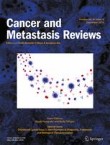
Abstract
As a member of small GTPase family, KRAS protein is a key physiological modulator of various cellular activities including proliferation. However, mutations of KRAS present in numerous cancer types, most frequently in pancreatic (> 60%), colorectal (> 40%), and lung cancers, drive oncogenic processes through overactivation of proliferation. The G12C mutation of KRAS protein is especially abundant in the case of these types of malignancies. Despite its key importance in human disease, KRAS was assumed to be non-druggable for a long time since the protein seemingly lacks potential drug-binding pockets except the nucleotide-binding site, which is difficult to be targeted due to the high affinity of KRAS for both GDP and GTP. Recently, a new approach broke the ice and provided evidence that upon covalent targeting of the G12C mutant KRAS, a highly dynamic pocket was revealed. This novel targeting is especially important since it serves with an inherent so lution for drug selectivity. Based on these results, various structure-based drug design projects have been launched to develop selective KRAS mutant inhibitors. In addition to the covalent modification strategy mostly applicable for G12C mutation, different innovative solutions have been suggested for the other frequently occurring oncogenic G12 mutants. Here we summarize the latest advances of this field, provide perspectives for novel approaches, and highlight the special properties of KRAS, which might issue some new challenges.
Δεν υπάρχουν σχόλια:
Δημοσίευση σχολίου
Σημείωση: Μόνο ένα μέλος αυτού του ιστολογίου μπορεί να αναρτήσει σχόλιο.